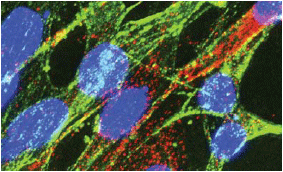Several recently published studies have provided new findings on glioblastoma.
In one study, published in the Annals of Neurology (doi:10.1002/ana.22036), researchers at the University of Bonn examined residual glioblastoma tumor cells remaining after surgery and found that several fundamental properties of these cells were substantially different from those of cells from the midst of the tumor mass. “The cancer cells in the vicinity of the tumor have different properties compared to those from the center of the tumor,” explained Martin Glas, MD, from the Department of Neurology’s clinical neurooncology unit. “For instance, they are more mobile, they form other receptors, and they react differently to radiation therapy or chemotherapeutic substances.”
In a second study examining the biology of glioblastoma tumor cells, researchers focused their study on DNA methylation of a specific set of genes and discovered molecular factors that define subgroups of gliobastoma (Cancer Cell. 2010; doi:10.1016/j.ccr.2010.03.017). “Such findings are critical to the detection and treatment of brain cancer based on the genetic or epigenetic profile of each patient’s disease,” said Francis Collins, MD, PhD, director of the National Institutes of Health. “The depth and breadth of expertise in The Cancer Genome Atlas research network, combined with ever-improving genomic technologies, is generating remarkably detailed insights into cancer.”
A third study, which focused on targeted treatments for recurrent or refractory anaplastic astrocytoma, found that patients treatedwith a targeted drug called trabedersen—an inhibitor of transforming growth factor-beta 2—had improved survival (39.1 months) compared with those treated with conventional chemotherapy (21.7 months) (AACR 2010; abstract 3716). Some patients had survived for as long as 8 years. ONA
